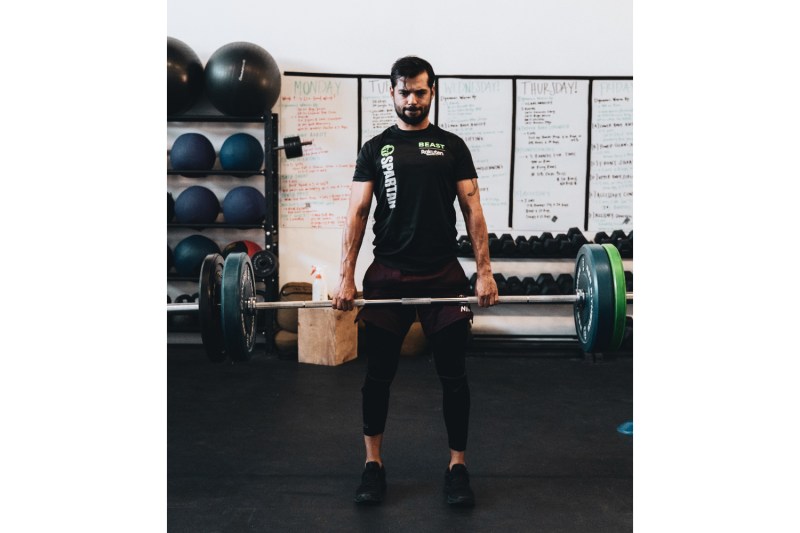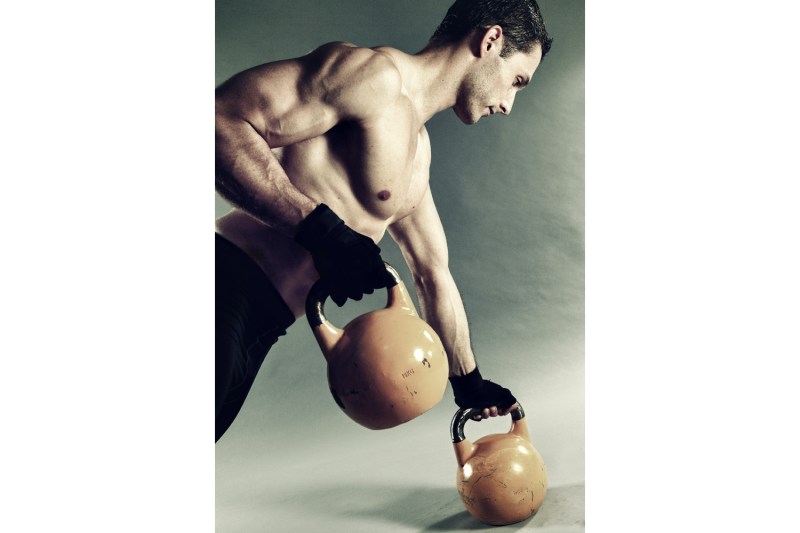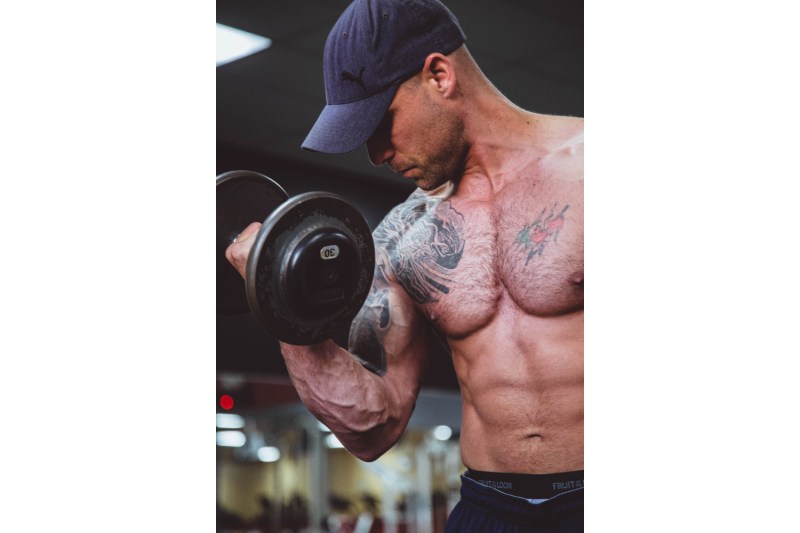As New Year’s approaches, many of us are thinking about getting in shape and kicking ass next year. With so many different programs out there, it can be hard to figure out what to do in the gym. One of the classic lifting routines is a push-pull workout.
Why Follow a Push-Pull Routine?
When following a push-pull workout, you divide your training into two days. You focus on pushing one day and then, as you probably guessed, focus on pulling the next day.
Some exercises that would fall into the pushing category would be bench press, shoulder press, dips, squat, and calf press. Notice the main thing is all of these exercises have you pushing weight away from your body, or pushing your body weight away from the ground. Exercises for your pull day would include deadlifts, pull-ups, bicep curls, and Romanian deadlifts. If you’re not sure what all those exercises look like, don’t worry! We’ll run through them all below.

Benefits of Push-Pull Workout
One of the benefits of the push-pull workout is that you go into the gym with a plan. If you go into the gym and work out whatever looks good or seems fun you’re going to develop imbalances and possibly get injured. With a dedicated push and pull day you’re guaranteed to work out each set of muscles at least once a week. If you’re just beginning in the gym, this’ll be enough. If you’re intermediate or advanced you’ll want to work out each muscle group twice a week.
Sample Push-Pull Routine:
- Monday: Push
- Tuesday: Pull
- Wednesday: Rest
- Thursday: Push
- Friday: Pull
- Saturday: Rest
- Sunday: Rest
The other benefit of the push-pull workout is preventing injury. When you work out your chest you’re using your front deltoids (shoulders) and triceps as well. If your workout plan has multiple exercises for the chest and then also hits the shoulders hard the total volume on your poor front delts could be way too much. They’re pretty small muscles, after all. And what’s worse is if you split this up so that on Monday you work out chest and turnaround and work out shoulders Tuesday. Your shoulders haven’t had time to rest from Monday and now you’re working them out again. It’s a recipe for injury for sure.
By grouping all like muscles together on one day you work out chest, shoulders, and triceps and then guarantee they get a couple of days rest before working them out again. Plus, if you’re working out a muscle before it’s fully recovered, you’re not getting the most of out your gym session. You might feel sore (constantly) and yet not improve your performance. This is a classic sign of overtraining. Rest more and you’ll start to see progress again!
Example of Push Day Exercises
So, what does push day look like?
- Elevate your heart rate with 5-10 minutes of cardio.
- Begin with a warm-up that will activate the muscles you’ll be training. This warm-up will get your chest activated.
- Once you’re warm, turn your attention to a heavy compound movement, in this case, the bench press. You can alternate between bar and dumbbells, and a flat and incline bench.
- Squat or front squat. Whether you use a bar, kettlebell, or bodyweight, the squat is the lift to develop your lower body.
- Shoulder Press. Again, barbells or dumbbells work for this exercise. If shoulders are your weak point, check out these exercises for building bigger shoulders.
- Dips. Depending on the angle and width of your dip, this exercise can work out the chest or triceps. To hit triceps keep your body upright and your arms close in.
Example of Pull Day Exercises

Example pull routine:
- Elevate your heart rate with 5-10 minutes of cardio.
- Warm-up the muscles involved in your pull workout. A lat pulldown is great to warm up the lats. Glute bridges warm up the glutes, which will come into play during your deadlift, and the hamstrings used in your Romanian deadlifts.
- Deadlift. The deadlift is one of the best compound lifts you can do. When done properly it works the back, legs, and core. Just make sure your form is on point.
- Dumbbell Romanian Deadlifts. This lift hits your other big leg muscle, the hamstrings. The hamstrings run along the back of your leg. Holding dumbbells in each hand keep your back straight and bend over so that the dumbbells are hanging beside your legs. Stand up straight while keeping a slight bend in your knee, focusing on pulling your upper body up with your hamstrings.
- Pull-Ups. This classic back workout hits the lats like nothing else. Do these at the gym or get a pull-up bar for home use.
- Bicep Curls. Whether you use dumbbells or a barbell, finishing off a pull day with a few sets of biceps curls just feels great.
While these exercises will get you started, you can always mix up your pull routine with some of the best back workouts.

Overall Body Composition

While the push-pull workout outlined above does a good job of working out the full-body, there are a few other considerations if you want to be in top shape. For many of us, a six-pack is the quintessential fitness goal. And if that seems a long way off, well, maybe just losing a few pounds. While the exercises above engage the core, supplementing your workouts with a few core-specific exercises will help build the abdominals. As the saying goes, though, abs are made in the kitchen. No matter how much you workout, lowering your overall body fat will help those abs shine through. This is going to come from nutrition and cardio more than lifting weights.
If you’re serious about getting lean, put together a nutrition plan and use a fitness app to make sure you’re hitting your targets. Cardio is a useful tool, just make sure you’re not overdoing it. If you currently don’t lift weights, eat whatever you want, and avoid cardio, putting all of these things in place at once is going to be brutal. Make incremental changes and set achievable goals. One more time: Make incremental changes and set achievable goals. Begin by setting a goal of going to the gym twice a week. Once you’re consistently doing that you’ll notice you actually want to eat better. A great start to improving your nutrition plan is limiting sugar, alcohol, and focusing on natural, whole foods. Introduce light cardio once or twice a week. Allow your body time to adapt to these new stimuli.
Most of all, enjoy the journey! Lifting weights is a great way to build muscle, get your heart rate up, break a sweat, and feel stronger.



